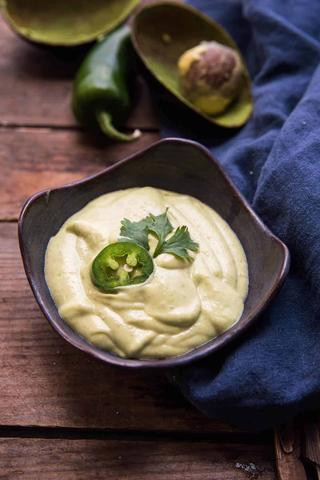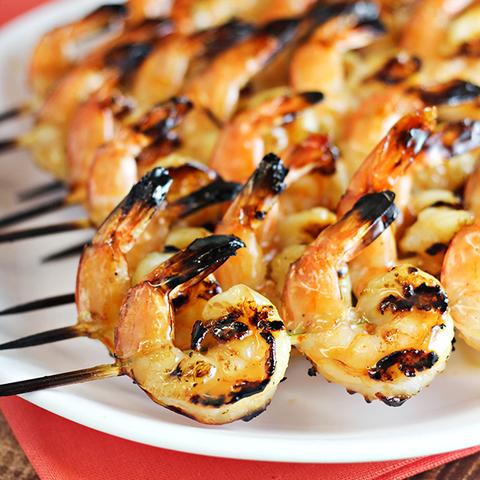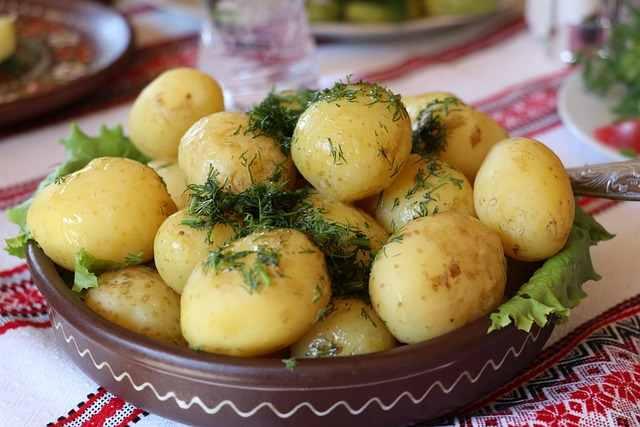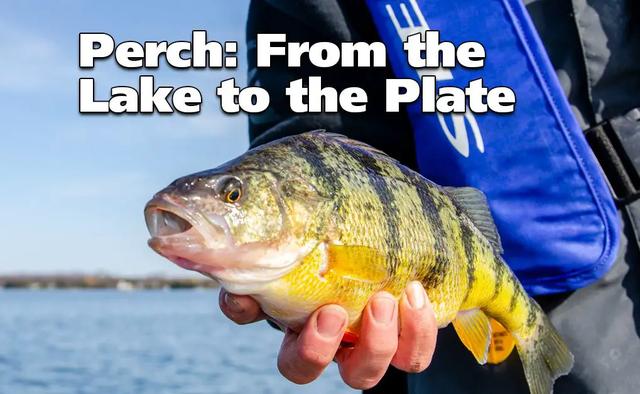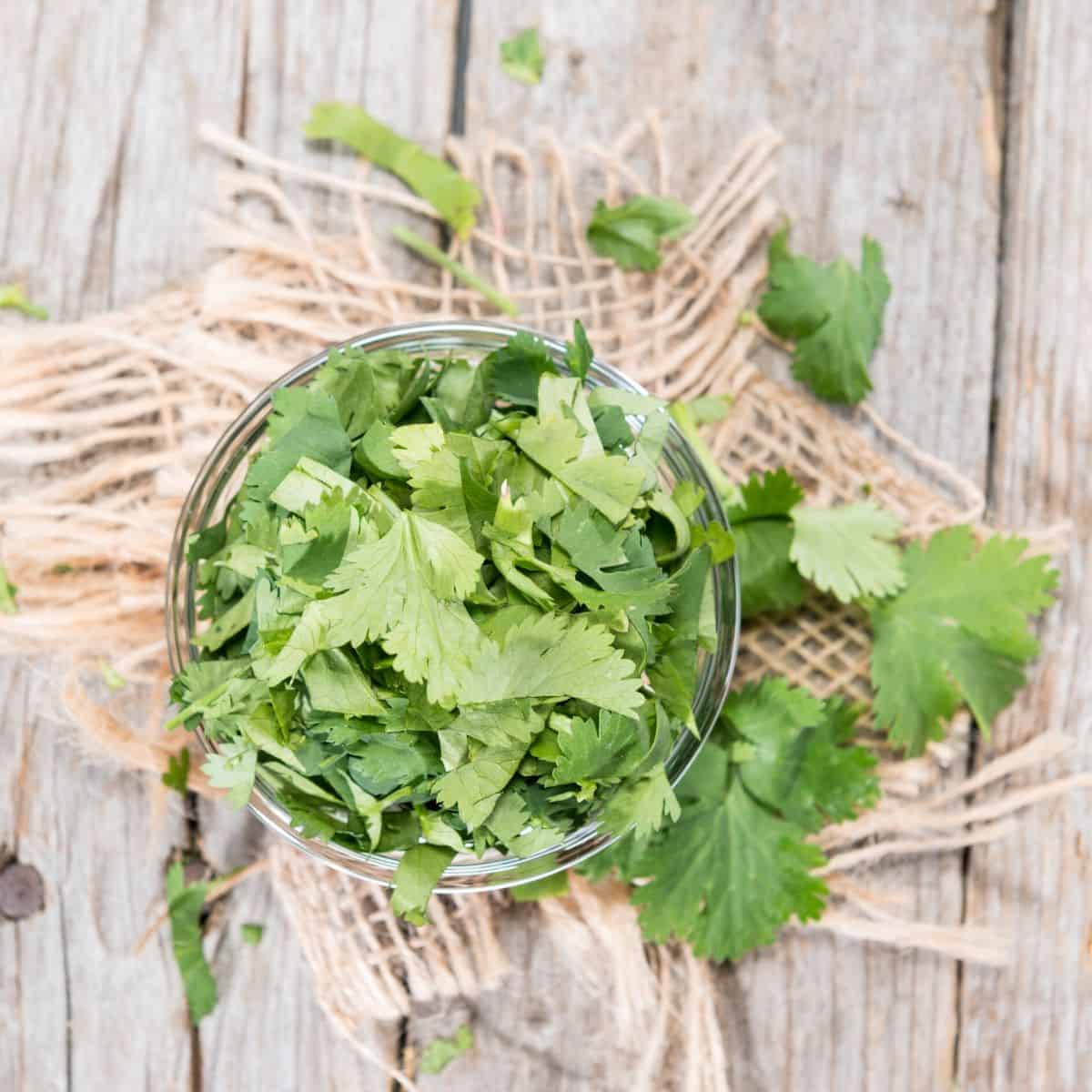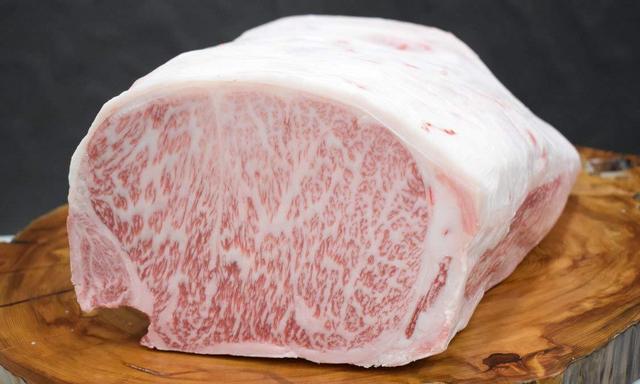
Discover the Exquisite A5 Wagyu Taste at Unbeatable Prices! Dive into the world of premium Japanese beef with our comprehensive guide on A5 Wagyu prices. Unlock the secrets behind this highly sought-after delicacy and explore where to find the best deals. From melt-in-your-mouth texture to unparalleled flavor, get ready to indulge in the ultimate gourmet experience without breaking the bank.
A5 Wagyu Steak at a Glance

A5 Wagyu steak is famous for its astronomical prices and insane marbling that makes the meat melt-in-your-mouth tender. It is produced in Japan and is known for its tender, buttery taste with insane marbling. A5 Wagyu steaks can cost around $250 or higher per pound.
Japanese A5 Wagyu beef comes frozen in vacuum-sealed packaging for maximum freshness when you order it. The high-grade Wagyu beef is known for its buttery melt-in-your-mouth tenderness, delicious meaty flavor, and distinctive texture. It gets its one-of-a-kind marbling from being specially bred with a specific diet, resulting in delicate pink color and prized tender flavor.
The scarcity of land in Japan contributes to the high price of A5 Wagyu steak. The Japanese cattle industry is much smaller than its US counterpart, with fewer cattle on Japanese feedlots receiving ample care and supervision from their farmers. The aging and limited number of specialized farmers also drive up the price of A5 Wagyu beef.
Japan has a rigorous traceability and security system to protect the quality and value of Wagyu beef. Each cattle is issued a traceable identification number unique to that specific animal, allowing for complete transparency. This thorough system adds to the cost of A5 Wagyu beef. Importing Japanese Wagyu to the US also incurs additional costs due to import quotas and taxes.
The unique marbling, taste, and texture of A5 Wagyu beef are achieved through specialized raising techniques. Japanese Wagyu cattle are fed on a special high-energy diet for a much longer period compared to US beef programs, resulting in full marbling development over time. These remarkable cattle receive meticulous care and monitoring from their farmers in a stress-free environment.
When buying A5 Wagyu, it is important to request an authenticity certificate that shows the unique cattle ID number. This helps ensure the beef’s quality and authenticity. The combination of careful monitoring, stress-free raising, prolonged feeding program, labor scarcity, land scarcity, and production regulations all contribute to the astronomical price tag of A5 Wagyu steak.
Despite its high price, A5 Wagyu steak offers an unforgettable eating experience with its exquisite marbling and taste. For those occasions when nothing but the best will do, the steep price is worth paying.
Why Does A5 Wagyu Steak Cost So Much?
A5 Wagyu steak is known for its astronomical prices due to several factors. Firstly, the meat has insane marbling, which makes it melt-in-your-mouth tender and gives it a rich flavor. This marbling is unique to Wagyu beef and cannot be found in any other kind of meat. The specialized breeding techniques used for Wagyu cattle result in their delicate pink color and prized tender flavor.
Another reason for the high cost of A5 Wagyu steak is the scarcity of land in Japan. The Japanese cattle industry is much smaller than its US counterpart, with significantly fewer cattle on Japanese feedlots. This allows each individual animal to receive ample care and direct supervision from farmers. However, labor is expensive in Japan, and there is a decreasing number of young people joining the Wagyu industry, leading to a limited number of specialized farmers and driving up prices.
Additionally, Japan has strict measures in place to protect the quality and value of Wagyu beef. Each cattle is issued a traceable identification number unique to that specific animal, allowing for complete transparency and protection against fraudulent sellers. Maintaining this rigorous traceability system adds to the overall cost of A5 Wagyu.
Lastly, importing Japanese Wagyu to the US incurs additional costs. There is an import quota on Japanese beef, with any amount exceeding this quota subject to a significant import tax. These additional expenses are passed on to consumers, further increasing the retail price of A5 Wagyu steak.
Unparalleled Taste
The taste of A5 Wagyu beef is truly unmatched. The high marbling of the meat creates a buttery, melt-in-your-mouth tenderness that is unlike any other steak. The rich flavor and distinctive texture make every bite a memorable experience.
The one-of-a-kind marbling in A5 Wagyu steak is what sets it apart from other meats. The delicate pink color and prized tender flavor come from the special breeding techniques used for Wagyu cattle. This exceptional marbling makes the beef incredibly soft and enhances its rich taste.
The scarcity of land in Japan plays a significant role in the high price of A5 Wagyu steak. Unlike in the US, where thousands of cattle can be found on one lot, Japanese feedlots have much fewer cattle, ranging from 10 to 100 per lot. This allows for more individual care and supervision from farmers, but also drives up the cost due to limited supply.
Japan’s Wagyu industry has implemented strict measures to protect the quality and value of their beef. Each cattle is given a unique identification number through nose printing at birth, ensuring traceability throughout its life. This system safeguards against fraudulent sellers and suppliers, maintaining the reputation of Wagyu beef.
The importation of Japanese Wagyu to the US incurs additional costs that contribute to the high price. An import quota limits the amount of Japanese beef that can enter the US market each year, with an import duty applied to the first 200 tons. Any amount exceeding this quota is subject to a 26.4% import tax, impacting the retail price of A5 Wagyu beef.
Japanese Wagyu cattle undergo a longer feeding period compared to US beef programs. They are fed a special high-energy diet for approximately 600 to 700 days, over five times longer than their US counterparts. This extended feeding period allows the Wagyu to fully marble and develop their unique flavor profile.
A5 refers to the highest grade of Wagyu beef, certified for sale in Japan. The grading is based on factors such as marbling, color, firmness, and texture. Out of over 300 Wagyu varieties, only A3 to A5 grades are recognized. The best-known cuts, such as Kobe beef and Matsusaka Wagyu, come from specific regions and have their own unique characteristics.
When purchasing A5 Wagyu steak, it is important to request an authenticity certificate that includes the unique cattle ID number. This ensures that you are getting genuine A5 Wagyu and protects against fraudulent sellers who cannot provide this documentation.
The astronomical price of A5 Wagyu steak is justified by its unparalleled taste and eating experience. While it may be considered an indulgence for special occasions, the quality and flavor make it worth the investment when only the best will do.
Japan’s Geography
Japan’s geography plays a significant role in the high price of A5 Wagyu steak. The country has limited land, which results in a smaller Japanese cattle industry compared to the US. With fewer cattle on feedlots, each Wagyu receives ample care and direct supervision from farmers. However, this limited supply drives up the price of A5 Wagyu beef.
Japan’s Wagyu industry is known for its rigorous traceability and security system, which adds to the cost of A5 Wagyu. Each cattle is assigned a unique 10-digit code at birth, allowing for complete traceability of its information. This system protects businesses and individuals from fraudulent sellers and suppliers, maintaining the reputation of Wagyu beef.
Importing Japanese Wagyu to the US incurs additional costs that contribute to the high price tag. The import quota on Japanese beef is limited to 200 tons per year and carries an import duty. Any amount exceeding the quota is subject to a 26.4% import tax imposed by the US government. These importing costs ultimately affect the retail price of A5 Wagyu beef in the US.
The specialized raising technique used for Japanese Wagyu also contributes to its high price. Unlike US beef programs that typically feed cattle for around 120 days, Japanese Wagyu are fed a special high-energy diet for much longer – ranging between 600 and 700 days. This prolonged feeding period allows for full marbling development, resulting in the unique taste and texture of A5 Wagyu.
A5 refers to the highest grade of Wagyu certified for sale in Japan. Wagyu is graded based on factors such as marbling and meat quality. Out of over 300 Wagyu varieties, only 10 regions produce the best cuts, including Kobe beef from Hyogo Prefecture and Matsusaka Wagyu from Mie Prefecture. The exclusivity and quality of these cuts contribute to the high price of A5 Wagyu steak.
Scarcity of Specialized Farmers
The scarcity of specialized farmers in Japan is a contributing factor to the high price of A5 Wagyu beef. Labor is expensive in Japan, and the number of young people joining the Wagyu industry is decreasing. This means that there are fewer farmers available to raise and care for the Wagyu cattle. With limited numbers, each individual cow receives ample care and direct supervision from their farmers, which adds to the cost of production and drives up the price of A5 Wagyu.
Security and Traceability System
Japan’s Wagyu industry has a rigorous traceability and security system with unparalleled transparency. The Japanese government maintains extremely strict measures to protect Wagyu quality and value. The first step starts with taking the nose print of every cattle at birth. Each cattle is then issued its own 10-digit code, which is a traceable identification number unique to that specific cattle. Japan’s National Livestock Breeding Center provides this service, which protects businesses and individuals from fraudulent sellers and suppliers. It’s also an effective safeguard for the world-renowned Wagyu beef reputation, which is hundreds of years old.
Using this unique ID number, you can trace back any information you need for every single Wagyu cattle. This includes the following:
- Date of birth
- Breed history
- Farm location
- Farm registration details
- Feed records
- Health records
- Husbandry practices
- Slaughterhouse details
- Distribution information
Importing Costs
The import of Japanese A5 Wagyu beef to the US incurs additional costs. The import quota for Japanese beef is set at 200 tons per year, and any amount exceeding this quota is subject to an import duty of 4.4 cents per kilogram. Additionally, the US imposes a 26.4% import tax on all Japanese beef that surpasses the import quota. These taxes and duties naturally impact the retail price of A5 Wagyu beef in the US.
Why Does A5 Wagyu Steak Taste So Good?
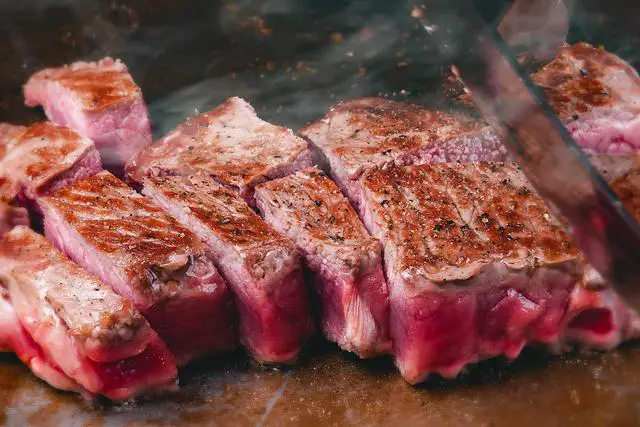
A5 Wagyu steak is known for its exceptional taste due to several factors. First and foremost, the meat has a high degree of marbling, which refers to the distribution of fat throughout the muscle. This intricate marbling gives the steak its buttery texture and rich flavor.
In addition to marbling, the unique breeding techniques used for Wagyu cattle contribute to its delicious taste. The cattle are specially bred with a focus on genetics, resulting in a delicate pink color and tender flavor that sets Wagyu apart from other types of beef.
The extended feeding period of Japanese Wagyu cattle also plays a significant role in enhancing the taste of A5 Wagyu steak. These cattle are fed a high-energy diet for up to 700 days, allowing them to fully marble and develop their distinct flavor profile.
Furthermore, the meticulous care and stress-free environment provided by farmers during the raising process contribute to the exceptional taste of A5 Wagyu steak. This attention to detail ensures that every aspect of the cattle’s well-being is prioritized, resulting in meat that is incredibly tender and flavorful.
Overall, it is the combination of marbling, breeding techniques, feeding program, and careful monitoring that makes A5 Wagyu steak taste so incredibly good.
Longer Feeding Time
Japanese Wagyu cattle are fed on a special high-energy diet for a significantly longer period compared to their US counterparts. While US beef programs feed cattle for around 120 days, Japanese Wagyu are fed for an extended period ranging between 600 and 700 days. This longer feeding time allows the Wagyu to fully marble and develop its unique flavor and texture. The meticulous care and stress-free environment provided by the farmers during this feeding period contribute to the exceptional quality of A5 Wagyu steaks.
Low-Stress Environment
Japanese Wagyu cattle are raised in a low-stress environment, which contributes to the quality and taste of the meat. Farmers provide meticulous care and direct monitoring to ensure that the cattle are not subjected to unnecessary stress. This includes providing a comfortable living space, minimizing handling and transportation, and maintaining a calm and peaceful atmosphere. By reducing stress, the meat becomes more tender and flavorful, resulting in an exceptional dining experience.
What Does A5 Mean?
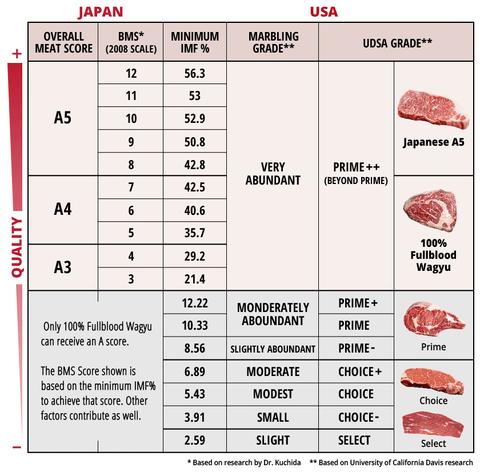
A5 refers to the grade of Wagyu. Wagyu is graded based on two factors: the yield score and the quality score. The yield score represents the amount of usable meat obtained from the carcass, while the quality score evaluates the marbling, color, and firmness of the meat. The only Wagyu grades certified for sale in Japan are A3 to A5. The higher the grade, the steeper the price, with A5 being the highest grade of them all.
Wagyu Cuts
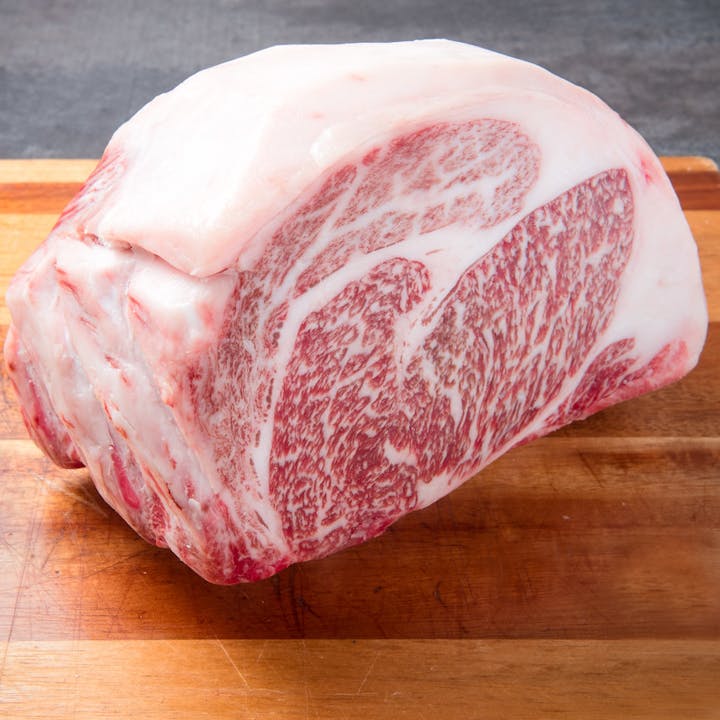
There are several cuts of Wagyu beef, each with its own unique characteristics and flavors. The most well-known and highly prized cut is Kobe beef, which comes from the city of Kobe in Hyogo Prefecture. Kobe beef is made from steers, which are castrated bulls. Another expensive cut is Matsusaka Wagyu, known for its incredibly tender texture. It is made exclusively from virgin female cows and comes from Mie Prefecture.
Other popular cuts of Wagyu include ribeye, striploin, tenderloin, sirloin, and chuck. Each cut offers a different balance of marbling and tenderness, allowing you to choose the perfect steak for your preferences.
How to Make Sure Your A5 Wagyu Is Authentic
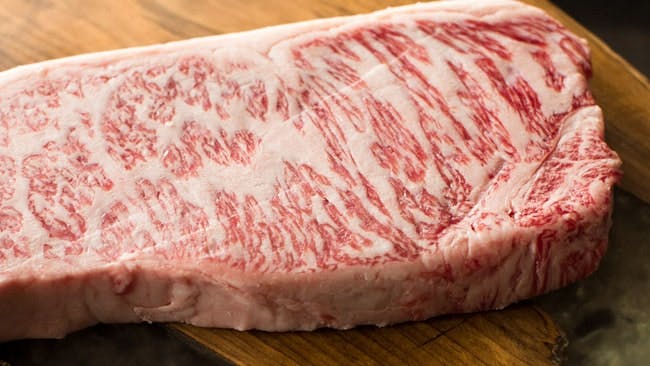
1. Request an authenticity certificate: When purchasing A5 Wagyu, always ask for the authenticity certificate that shows the unique cattle ID number. This ensures that you are buying genuine A5 Wagyu from Japan and not a counterfeit product.
2. Buy from reputable sources: Purchase your A5 Wagyu from trusted suppliers or retailers who have a good reputation for selling authentic Japanese beef. Look for certifications or endorsements from recognized organizations.
3. Check the marbling: A5 Wagyu is known for its intense marbling, with fat distributed evenly throughout the muscle fibers. Inspect the steak closely and ensure that it has a high level of marbling, which is characteristic of authentic A5 Wagyu.
4. Consider the price: Authentic A5 Wagyu is expensive due to its rarity and quality. If you come across a significantly lower-priced A5 Wagyu, it may be a sign that it is not genuine.
5. Research the supplier: Before making a purchase, do some research on the supplier or retailer to verify their credibility and authenticity. Look for customer reviews and feedback to ensure they have a track record of selling genuine A5 Wagyu.
By following these steps, you can increase your chances of purchasing authentic A5 Wagyu and enjoy the true flavor and quality of this exquisite Japanese steak.
Conclusion
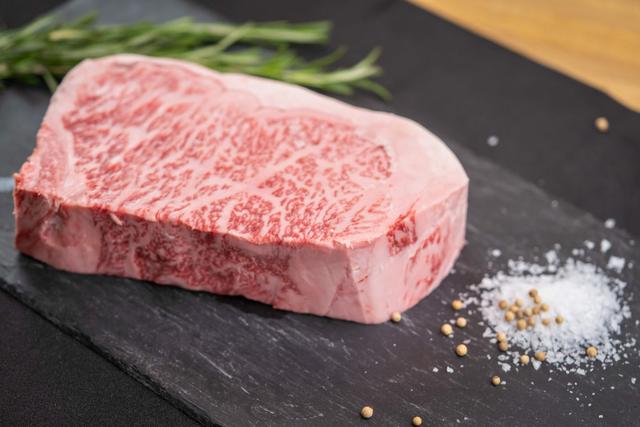
A5 Wagyu steak is known for its astronomical prices and insane marbling that creates a melt-in-your-mouth tender texture. It can cost around $250 or higher per pound, making it a luxury item. The high price is justified by the unique qualities of Wagyu beef, including its buttery tenderness, rich flavor, and distinctive texture.
The marbling of Wagyu beef sets it apart from other meats, giving it a delicate pink color and prized tender flavor. This marbling is achieved through special breeding techniques that result in the unique quality of the meat. Additionally, the scarcity of land in Japan contributes to the high price of A5 Wagyu steak. The Japanese cattle industry is smaller than its US counterpart, with fewer cattle receiving ample care and supervision from farmers.
Japan’s rigorous traceability and security system also affect the price of A5 Wagyu. Each cattle is given a unique identification number that allows for traceability and protects against fraudulent sellers. Importing Japanese Wagyu to the US incurs additional costs due to import quotas and taxes.
The specialized raising technique of Japanese Wagyu cattle contributes to their world-renowned flavor profile. These cattle are fed on a high-energy diet for 600-700 days, which is over five times longer than their US counterparts. Farmers provide meticulous care and monitoring to create a stress-free environment for the cattle, resulting in the exquisite marbling and taste of A5 Wagyu steaks.
In conclusion, while A5 Wagyu steak comes at a steep price, its unforgettable eating experience makes it worth trying for those special occasions when nothing but the best will do.
In conclusion, the price of A5 Wagyu beef can be quite high due to its exceptional quality and limited availability. However, it is considered a luxury food item that offers an unparalleled dining experience for those willing to indulge in its rich marbling and intense flavor. While it may not be affordable for everyone, the unique characteristics and exquisite taste make A5 Wagyu worth considering for special occasions or as a treat for discerning meat enthusiasts.
Learn More About Grilling
If you want to learn more about grilling, check out these other helpful resources!

